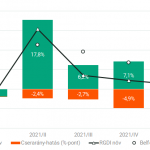
We develop a method which assumes that marital preferences are characterized either by the scalar-valued measure proposed by Liu and Lu, or by the matrix-valued generalized Liu–Lu measure. The new method transforms an observed contingency table into a counterfactual table while preserving its (generalized) Liu–Lu value. After exploring some analytical properties of the new method, we illustrate its application by decomposing changes in the prevalence of homogamy in the US between 1980 and 2010. We perform this decomposition with two alternative transformation methods as well where both methods capture preferences differently from Liu and Lu. Finally, we use survey evidence to support our claim that out of the three considered methods, the new transformation method is the most suitable for identifying the role of marital preferences at shaping marriage patterns. These data are also in favor of measuring assortativity in preferences à la Liu and Lu.
⇒ Tovább a teljes cikkre.
Nem található esemény a közeljövőben.
A KRTK Közgazdaság-tudományi Intézet teljesítményéről A KRTK KTI a RePEc/IDEAS rangsorában, amely a világ közgazdaság-tudományi tanszékeit és intézeteit rangsorolja publikációs teljesítményük alapján, a legjobb ... Read More »

Tisztelt Kollégák! Tudományos kutatóként, intézeti vezetőként egész életünkben a kutatói szabadság és felelősség elve vezetett bennünket. Meggyőződésünk, hogy a tudomány csak akkor érhet el ... Read More »

Srí Lanka: a 2022-es gazdasági válság leckéje – A. Krueger Lessons from Sri Lanka Anne O. Krueger Jul 25, 2022 – Project Syndicate ... Read More »

A permanens válság korában élünk – J. Meadway We’re living in an age of permanent crisis – let’s stop planning for a ‘return ... Read More »

A 2021 végén, illetve 2022 elején tapaszalt 6, illetve 7%-os cserearányromlás brutális reáljövedelem-kivonást jelentett a magyar gazdaságból. A külső egyensúly alakulásával foglalkozó elemzések többnyire ... Read More »
